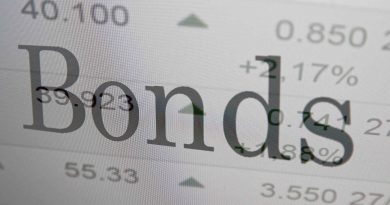Growth Investing Strategies
By Josefino R. Gomez
Investopedia defines Growth Investing as a strategy whereby an investor seeks out stocks with what they deem good growth potential. In most cases a growth stock is defined as a company whose earnings are expected to grow at an above-average rate compared to its industry or the overall market. There are no exact formulas or specific methods for evaluating this potential. We will try to present some guidelines and strategies for picking growth companies by standing on the shoulder of some of the growth investing giants.
Michael Moe, founder and CEO of ThinkEquity Partners who identified the world famous coffee company named after a Moby Dick character long before it became famous, wrote in his book his framework for finding growth companies. We will expound on some of his main points:
Find industries which are growing or will continue to grow in the future due to excess demand.
We can also search for identifiable megatrends such as globalization, growing middle class, urbanization, growth in trade, cloud computing, online shopping.
Look at the companies in an identified growth industry. Specifically, look at the following:
People: The management must be great. They must be visionaries and must have character and skills to manage a company. Preferably owns a good chunk of the company.
Product: Their products must have a huge demand from their customers.
Potential: Are the products of the company scalable? If it’s a restaurant, will they be able to duplicate the taste and quality of their food? If it’s a port operator, will their efficient operations and past experience be usable and applicable to other countries?
Predictability: Looking at the historical financials and envisioning their future, is their growth predictable? Are the earnings consistent with the growth in sales? Can we reasonably estimate the earnings and revenue growth of the future?
A disciplined way for valuing companies will reduce the risk of chasing a stock that’s gone ahead of itself without any supporting fundamentals.
P/E to growth is a classic way growth investors value growth companies. P/E is the stock price per share to earnings per share ratio. If the normal P/E of a company is 10 times and its earnings per share is growing at an annual rate of 20%, the P/E/G ratio is 0.50. It means that it is trading at a discount because the general rule is that a normal growth company in a normal market environment should trade at a P/E/G ratio of 1 or 100%. Other metrics such as P/S or Price to Sales and Discounted Cash Flow (DCF) method may also be used. Of course each of these valuation methods has their own strengths and weaknesses.
Phil Fisher, a long time successful growth investor and the author of the classic book “Common Stocks and Uncommon Profits” presented some of his investing philosophy as follows: (I will also put in parenthesis quotes from Peter Lynch, a retired and successful portfolio manager from Fidelity Magellan. Observe that they have a similar investing philosophy.)
Buy stocks in companies with disciplined plans for achieving long term growth in both sales and profits. They must have a moat or a competitive advantage that will make it hard for new companies to reduce their market share. (“If you can follow only one bit of data, follow the earnings – assuming the company in question has earnings. As you’ll see in this text, I subscribe to the crusty notion that sooner or later earnings make or break an investment in equities. What the stock price does today, tomorrow, or next week is only a distraction.”)
Find these companies when they are ignored, unloved and unwanted, when the market conditions are unfavourable or most investors do not properly see their true worth. (“I’ve found that when the market’s going down and you buy funds wisely, at some point in the future you will be happy. You won’t get there by reading ‘Now is the time to buy.’”)
Hold the stocks until there has been a fundamental change in business fundamentals or it will no longer grow at a faster rate than the economy. Don’t sell simply due to short-term market volatility. (“As long as the same-store sales are on the increase, the company is not crippled by excessive debt, and it is following its expansion plans as described in its reports, it usually pays to stick with the stock.”)
Since the goal is long term appreciation of capital, a low or no dividend pay out is generally expected. (“Buying stocks in a utility company is good because it gives you a higher dividend, but you’ll make money in growth stocks. Over the long term, it’s better to buy stocks in small companies.”)
There are relatively a small number of truly outstanding companies. Concentrate on your best ideas. Holding more than 20 companies is not advisable. (“Hold no more stocks than you can remain informed on.”)
Invest in what you know. Be more knowledgeable than others and use your judgment after thoroughly analyzing the facts and objectively measuring your risk for each situation. Have the courage to act against the crowd when your judgment tells you that you are right. (“Never invest in any idea you can’t illustrate with a crayon. Buy or do not buy the stock on the basis of whether or not growth meets your objectives and whether the price is reasonable.”)
Recognize that mistakes in picking stocks are inevitable. Trying to learn and understand from these mistakes is a must. (“You should invest in several stocks because out of every five you pick, one will be very great, one will be really bad, and three will be OK.”)
And finally…success in investing is highly dependent on a combination of hard work, intelligence and honesty. (“You shouldn’t just pick a stock – you should do your homework. As I look back on it now, it’s obvious that studying history and philosophy was much better preparation for the stock market than, say, studying statistics. Investing in stocks is an art, not a science, and people who’ve been trained to rigidly quantify everything have a big disadvantage. If stock picking could be quantified, you could rent time on the nearest Cray computer and make a fortune. But it doesn’t work that way. All the math you need in the stock market you get in the fourth grade.”)



